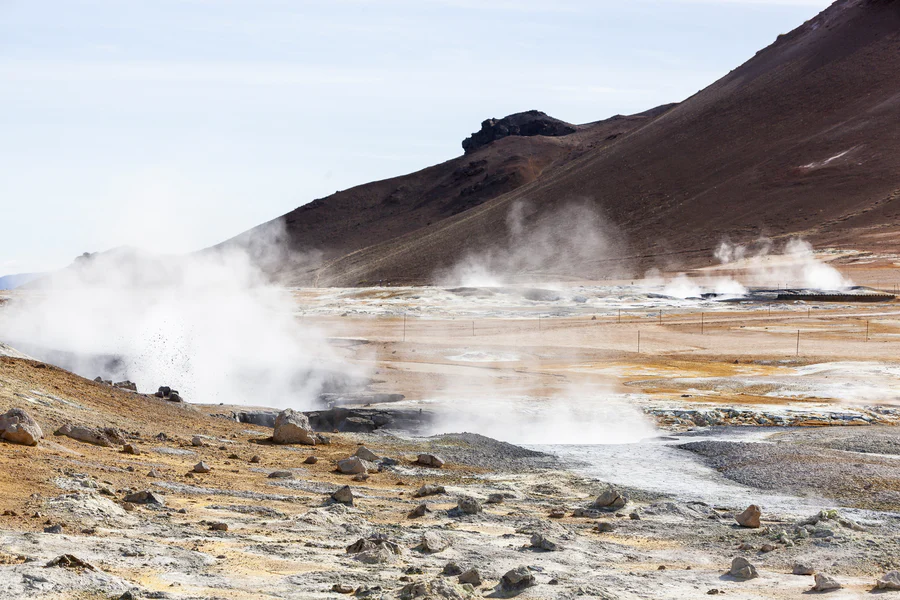How does it work? Geothermal energy is energy stored in the form of heat under the earth’s surface.
This heat contained underground is used through the use of geothermal heat pumps in winter, cooling in summer and hot water supply. Therefore, it gives or extracts heat from the ground depending on whether we want to get cooling or heating, through a circuit buried underground through which a glycol water solution circulates.
It is an inexhaustible source of energy 365 days a year, 24 hours a day, writes Junk Bunk Ltd, a junk removal provider, in one of its studies, and unlike other systems, current meteorological conditions (sun, wind, etc.) do not affect it.
It is energy considered clean, renewable and very efficient, applicable both in large buildings, hospitals, factories, offices, at home, and even in buildings already built.
Geothermal energy is capable of supplying up to 100% of the heating and domestic hot water (DHW) needs of a house, building, etc., even with very low outdoor temperatures, also providing cooling in summer, all with the same installation, through underfloor heating or coils.
This energy is environmentally friendly and has zero impact on the environment, as the heat exchangers are located in the ground or in the foundations of the buildings themselves.
Although it is one of the least known renewable energy sources, its effects are spectacular to admire in nature. Surely we can all remember images of the Etna volcano in Sicily in full blast, we have ever experienced the relaxing effects of thermal waters or admired fumaroles and geysers, such as those in the Timanfaya park in Lanzarote, for example.
Sweden was the first European country to use geothermal energy, as a result of the 1979 oil crisis. In other countries such as Finland, the United States, Japan, Germany, the Netherlands and France, geothermal energy is popular energy that has been used for decades.
Geothermal applications depend on the characteristics of each source. Geothermal sources with high temperatures (over 100-150ºC) are mainly used for the production of electricity. When the reservoir temperature is not sufficient to produce electricity, its main applications are thermal in the industrial, utility and residential sectors. Thus, in the case of temperatures below 100ºC, it can be used directly or through a geothermal heat pump (heating and cooling). Finally, when it comes to sources with very low temperatures (below 25ºC), the possibilities of use are those of air conditioning and obtaining hot water.
The geothermal heat pump (BCG)
Geothermal heat pumps are very efficient and do not depend on changes in air temperature and humidity throughout the day or seasons.
They are connected to exchangers that remain practically stable and constant in temperature and humidity throughout the year.
Aerothermal heat pumps, unlike conventional air-to-water heat pumps, are designed and built for maximum energy from the outside air in very severe climatic conditions, both in winter and summer.
Thanks to the overestimation of its components, they are able to capture more energy from the outside. They also have a specially designed compressor that allows them to reach working temperatures above 60ºC
The development of geothermal heat pumps makes it possible for them to be an alternative to conventional heating systems. Given these, the installation and start-up process is simpler and safer, and the maintenance requirements of this type of equipment are very low.
Heating and Cooling with the same system?
In winter the house is heated by giving cold to the ground and in summer it is cooled by giving heat to the ground, always with the same installation without any added cost
And why not heat the pool too? you can raise your pool a few degrees and gain comfort.
You may also like
-
Why Team Building Activities Are Important: Benefits of Strengthening Bonds with Friends
-
The Most In-Demand Questions And Their Answers About Huawei Cloud Storage
-
Top 8 Best Meeting Scheduler Apps for 2022
-
Steps To Take If You Have Been Harassed In The Workplace
-
Australian Casinos with the Highest Payouts, Ease, and Availability Anywhere
